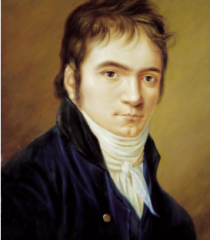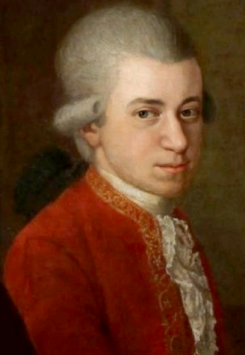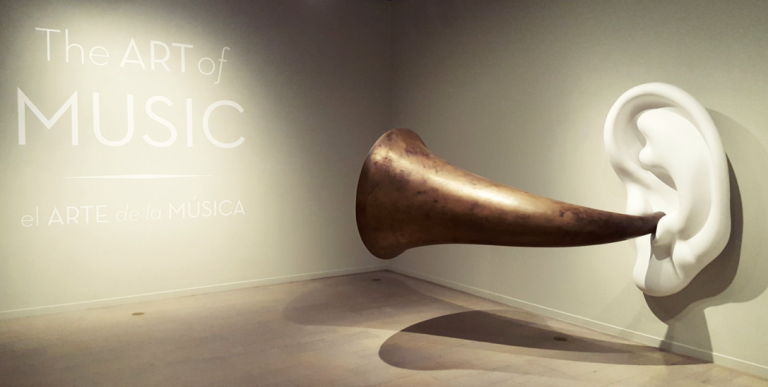Your personal music search space.
Augment your understanding of music.

______________________________________________________________________________

YMUSIC SEARCH ENGINE
MUSIC'S RELATIONSHIPS WITH OTHER ARTS AND CULTURE
Music is more than a casual leisure, an art or the new way to increase the benefits of a company. It is all of that and even more. The music industry is a rich ecosystem in which everyone and everything has a specific place. From the composer to the listener, from psychology to spirituality, from art to science, get insights on each field of music, learning about craft or history, about human behavior or consciousness. A place is also given to ethical questions.
MUSICAL CULTURE IN ITS VARIOUS ASPECTS

Independently of any music genre, discover how composers create sound effects, usint the YMusic search engine, your free personal assistant (it includes musical criteria to select music), to know more about music itself.
What use is being made of music on the screen?
Be it in a mini-series produced for the television or for a big-budget movie, music is omnipresent in screen production. The sound, it seems, helps to convey messages contained in scripts, increases the intensity of specific scenes, shapes characters, structures the time of the story and communicates emotions to listeners. Sometimes it is used to create a certain mood in the mind of listeners. Music and sound can enhance the appearance of an inanimate object to which one wants to call attention. It can even aid the listener to understand a situation.
The timing at which each music comes into a movie is important. Of course, pieces of music called ‘opening’ and ‘ending’ themes are, generally, carefully nurtured by composers and the post-production team working on a movie. They introduce and conclude movies, inducing the general atmosphere at the outset of a story and inviting onlookers to draw their conclusions once everything has been said and done. Also, an opening sound may just celebrate the cinematographic production itself. For example, at the beginning of Hollywood’s movie ‘Gone with the Wind’, the sound of a bell is heard, just putting the emphasis on the fact that the film is an international picture.
Screen music and the listener
One question that may be asked, listening to screen music, is: ‘What am I and who am I hearing?’. For example, in ‘2001, A Space Odyssey’, listeners may hear a piece written by contemporary composer Györgi Ligeti: strident voices are heard. Questions may arise as two astronauts walk in a dark place: is there someone there? Someone else? It creates suspense and even threat. Such a dramatic piece of music is well chosen, it fits with the ambiguous scenery. But we find that a fitting piece of music is not always one that supports the message of a scene. Sometimes it may give rise to a change in mood, for example in a romantic comedy, when an unexpected character appears or when there is a funny situation.
In some movies, where music has a place inside the story, it is interesting to see how the musical soundtrack reinforces that place. How can it be? For example, in the film ‘The Mission’, a song called ‘On Earth as it is in Heaven’ is played and, at the end of it, the main character, a Spanish priest that is in south America to share the Christian faith in a pacific way, is seen playing the oboe, circled by indigenous people who wonder if he is dangerous or not. It is an important scene in the script: music is conveying peace and is totally assimilated to the target of the main character. There is a mise en abyme, both of music and of one key theme. Let us notice that such an interpretation is rare: in most of films, the meaning of music is not so clear. Also, it does not pretend to be absolute: each listener contributes to create the meaning of a piece of music, whether it is heard in a movie or not.

Music and the screen: why is music so appreciated by film and television producers?

Independently of any musical piece, do you want to discover how composers construct musical time, using numbers and ratios to manipulate sounds? Try the YMusic search engine, your free personal assistant (it includes musical criteria to select music), and enjoy great musical ratios!
Why is Beethoven considered a prodigy?
Some differences between Mozart and Beethoven’s social and personal routes
Born in 1780, 24 years after Wolfgang Amadeus Mozart, Ludwig van Beethoven met him five years before Mozart died. He made such a good impression that Mozart was ready to take him as a student. Both Beethoven and Mozart’s music are recognized as brillant and they are, but not in the same way. And Beethoven’s life was different from Mozart’s. First of all, even if his father, a tenor singer, gave some music lessons to his son and encouraged his talent, Beethoven had a difficult childhood because his father drank. And it was alone that, when he was seventeen, Beethoven made his first journey to Vienna, notably to meet Mozart. Finally, Beethoven made his first public performance when he was twenty-five, while Mozart did so before he was ten.
Reaching adulthood, unlike Mozart, Beethoven did not marry. Contrary to Mozart, he never went to mass and did not practice any devotion; and he did not join the Freemasons. But he developed the Romantic love of the natural world, mentioned Christ and the Deity and, in mid-life, developed an interest in eastern religions like Hinduism, quoting them, defining a pure essence of God that is very close to the definition given by the Old Testament. At the age of twenty-eight, Beethoven lost his hearing, first partly, then completely. He was more or less halfway through his life (he died in 1827). However, he continued to compose music.
Elementary characteristics of Beethoven’s music
Like Mozart, Beethoven was highly productive: he composed 722 pieces of music. Like that of Mozart, even if later, Beethoven’s music was played for and appreciated by royalty, before being known by everyone. Beethoven wrote his first piece of music during the year 1791. In 1792, he moved to Vienna. In 1793, he was noticed by Prince Lichnowsky, one of the best known musical patrons of the city. The Prince became Beethoven’s patron and he was quickly recognized as a virtuoso. From 1794 to 1800, Beethoven wrote. In 1800, he published his first symphony and, in 1802, the famous ‘Moonlight Sonata’. In 1805, the legendary ‘Symphony n° 5’ was created. Beethoven continued to write until the year of his death.
Beethoven is said to be a genius because his music was revolutionary, breaking with the norms of classicism to enter the Romantic era, according to the musical innovations of his time and also to his character: he was known to be impetuous. But as for Mozart, it is not possible to exhaust the topic of his musical genius. We can notice that Beethoven was rapidly loved for his capacity to create a sense of dramatic timing. How did he create such moving compositions, especially when he became deaf? Experts explained that he was able to create very powerful musical patterns where mathematical proportions occupied a prominent position. For instance, the ‘Moonlight Sonata’ opens with no less than 36 triplets! These triplets are not boring, why? Because they are inserted in a smart melodic structure that reveals how mathematical ratios may be a source of musical perfection. Of course, Beethoven was consciously establishing these ratios, envisioning them, then transcribing them on paper.

Beyond any piece of music, discover more about the way composers combine the various parameters of the sound to create music. Try the YMusic search engine, your free personal assistant (it includes musical criteria to select music), and know more about the true nature of music!
What does everyone know about Mozart’s musical, spiritual and personal journey?
Born in 1756, Wolfgang Amadeus Mozart was the son of Leopold Mozart, a composer, conductor and violonist. Leopold taught music to his two children, Wolfgang and his older sister Nannerl. The children were gifted, especially Amadeus, who wrote his first compositions, an ‘andante’ and an ‘allegro’, in 1761. In 1762, Mozart composed three minuets and one ‘allegro’. They toured with their father throughout Western Europe between 1763 and 1766, performing in towns like Vienna, Munich, Paris, the Hague or London, where they stayed longer. They played in front of many royals. During the year 1764, Mozart wrote two sonatas and his first symphony.
‘Mozart wrote’: it is not possible to enumerate all his compositions until 1791, the year where Mozart died, having composed ‘Die Zauberflöte’ and saw the birth of his sixth child. Let us notice that, even if Mozart is known to have joined the Freemasons in 1784, he was raised as a catholic and the Church occupied an important place in his life: he received the Order of the Golden Spur in 1770 for his compositions. Even if a Papal Bull had condemned Freemasonry in 1738, Mozart saw no problem belonging to the two organizations and he received a catholic funeral service.
Some facts talking about Mozart’s musical genius
Whether genius is innate or acquired, be it natural or the result of hard word, genius is genius. Facts tell us about Mozart’s capacities: in 10 years, he wrote 8 symphonies, 6 operas, 17 concertos, 11 string quartets, 5 string quintets and a lot of other compositions. Plus all these compositions were and are acclaimed and played countless times all around the world, from the time of their publication until now. Mozart wrote more than 600 compositions during his all too short life.
But let us go further. It is proven that Mozart was able to hear complete pieces of music in his head before writing them and he was distinguishing(he distinguished) them from the material he had previously written. Composed to be entertaining and fun, his music was quickly appreciated for its simple melodies, its contrasting moods and its rich orchestration. However, Mozart did not deny he worked very hard to obtain these results, studying famous masters over and over.
Mozart was innovative and solved various musical problems. For instance, until him, opera presented characters from mythology and the aristocracy. It was mainly based on dialog, alternating arias and recitatives. Mozart wrote operas with characters having real personalities and belonging to the middle-class. Musically speaking, these works were fluid, blending recitatives and arias. Also, they were more cohesive than operas written before, the orchestration and allt he other musical elements contributing to add depth to the characters and the plots.
It is impossible to sum up in a few words all the qualities presented by all Mozart’s compositions. As an indicator, we may highlight that Leonard Bernstein, during his Norton lectures, explained that Mozart managed to transform prosodic symmetry into poetic balance: it means that, apparently academic and unnecessary, repetition in Mozart’s music, because it is combined with a powerful orchestration and a subtle harmony, is absolutely not.
Why is Mozart said a genius?
Do you want to discover how music composers embodied their musical imagery into their compositions, for example in Shakespeare’s and Morley’s ‘O Mistress Mine’? Try the YMusic search engine, your free personal assistant (it includes musical criteria to select music), and apply your own imagination to music listening!
What is musical imagery?
Musical imagery is a form of musical thinking that is multimodal, as it includes auditory, visual and motor constituents which, put together, form an inner piece of music that a listener may hear without any external sound. Its processes involve associative memory: mental imagery is part of lively recollections or ancient happenings. There is a kind of inner music that listeners do not predict and that is called spontaneous musical imagery. That phenomenon is generally produced after a recent musical exposure and it raises an individual’s memories to the surface. Spontaneous musical imagery happens suddenly and at random: someone may recall an ad jingle heard years ago, but not a title heard on the radio some days ago.
Besides spontaneous musical imagery, there is deliberate voluntary musical imagery, that requires some effort to bring a specific piece of music back to mind because the listener wants to hear it again. Linked to the work made by music composers, conscious musical imagery is the purposeful usage of imagination by composers: it is their capacity to see sounds when they are not audible and to envision a view of a whole score or a separate part. It is partly shared by a community of musicians, as each music style shares common communication rules, but it is also individual, depending on the musicians’ experience and areas of interest. That type of imagery is reinforced by learning and practice, including during public performance. Conversly, musical skills may be enhanced by training in musical imagery.
Shakespeare and music composers
In Shakespeare’s work, musical imagery, which is not accidental, is of course not used to improve musical training: Shakespeare wrote songs to highlight the tragic and dramatic nature of his stories. And in his total body of work, there are many allusions to the musical art, reflecting a deep knowledge of music, from the elementary notion of the scale to complex philosophical concepts like the music of the spheres coming from Ancient Greece and ideas related to the spirituality of music coming from the work of Pico della Mirandola.
Shakespeare understood very well how poetry and music are naturally linked. He collaborated with poet Thomas Morley to write the lyrics of ‘O Mistress Mine’. At the end of the 16th century, Morley was one of the most appreciated poets and he was also a music composer and an organist. That piece of music was popular before being brought to the stage by Shakespeare. Shakespeare worked with another poet, Emilia Lanier, who, like Morley, was a royal musician.
Musical imagery and the texts written by Shakespeare

Do you want to discover impressionism in music? Try the YMusic search engine, your free personal assistant (it includes musical criteria to select music), and listen to some pieces written in the impressionist style!
Impressionism: music and painting
Creating impressions
Born in the late 19th century, during the Romantic era, impressionism was first a painting tendency whose intent was to promote human motion: painters wanted to depict their subjects as their human eyes perceived them, using unconventional visual angles and thus they refused to apply the ancient academic rules of painting. Also, impressionist painters painted a lot of outdoor scenes that were part of modern life, putting a strong emphasis on color and varying the ways in which they used their brushes in order to capture the impressions perceived by the eyes in a more spontaneous way.
The target of impressionist painters was to show the essence of a subject, rather than its particularities. In that context, they often emphasized the role of natural light, useful to discern the outlines of a subject. Insisting on the importance of colour, they took advantage of the technological development of the era: they had access to synthetic pigments whereas before, painters were forced to create their own paint, mixing pigments with oil.
Musical atmospheres
Like impressionist painters, impressionist music composers were eager to describe human passions and nature, willing to create atmospheres and suggestions, rejecting realism. To reach that target, they introduced new chords in the structure of classical music: major 7th chords. Generally, they freed chords from their original fixed role, which was to create harmonic movements within melodies, and regarded them as entities by themselves. These composers, being innovative, also explored special scales like the whole tone scale, where all the notes are separated by a whole tone. To innovate more, at the level of the timbre, some impressionist composers studied abroad to bring back something new to Western classical music. For instance, Claude Debussy went to Bali to listen to local musicians playing gamelan, an orchestra mainly made up of metallic percussion instruments.
Let us notice that all composers who took liberties with musical romanticism did not agree with being compared to impressionist painters. However, as impressionist painters renewed the use of color, so impressionist composers took liberties with timbre, producing new effects through harmonic creation, texture modification and orchestration. Also they created new tonalities and combined chords in original ways.
These types of effects can be found in pieces written by Debussy, ‘La Mer’, ‘Images’, ‘Clair de Lune’, ‘Nocturnes’, ‘Prélude à l’Après-Midi d’un Faune’, etc. The ‘Bolero’ composed by Maurice Ravel and Gabriel Fauré’s ‘Requiem’ are also said to be impressionist. We can see that the titles of the pieces of music reinforce their impressionist character: ‘La Mer’ means ‘The Sea’ and ‘Clair de Lune’ is French for ‘Moonlight', for example. Such titles evoke outdoor places generally associated with a romantic atmosphere. Actually, impressionism was also found in literature and ‘Prélude à l’Après-Midi d’un Faune’ (‘Prelude to the Afternoon of a Faun’) was originally a poem by Stéphane Mallarmé. Listening to the result, Mallarmé wrote that he was very satisfied by the rendering of the music, that was, according to him, a passionate painting corresponding to the imagery found in the poem.
Impressionism: music and painting